 Pietro Annigoni was a passionate man and a very serious artist. But he would have had to be in order to be successful swimming against the tide of the art world. He lived life to the fullest
Pietro Annigoni was a passionate man and a very serious artist. But he would have had to be in order to be successful swimming against the tide of the art world. He lived life to the fullest and experienced great anguish at times. He worried about the state of humanity.
and experienced great anguish at times. He worried about the state of humanity.![[art of Annigoni solitude painting]](http://www.borsheimarts.com/news/images/news0903_Annigoni_PaintingSolitudineIII_1973.jpg) I have heard stories of a dramatic and sometimes dangerous temper, but as one of my Italian artist friends put it when I asked if this were true,
I have heard stories of a dramatic and sometimes dangerous temper, but as one of my Italian artist friends put it when I asked if this were true,![[Annigoni selfportrait]](http://www.borsheimarts.com/news/images/news0903_AnnigoniPietro_SelfPortrait2museo.jpg) "Si, Annigoni aveva un caratteraccio, ma fondamentale molto buono." (Yes, he had a temper, but was fundamentally of a very good character.)Born in Milan in 1910,
"Si, Annigoni aveva un caratteraccio, ma fondamentale molto buono." (Yes, he had a temper, but was fundamentally of a very good character.)Born in Milan in 1910,![[Annigoni portrait of Queen Elisabeth II]](http://www.borsheimarts.com/news/images/news0903_Annigoni_PortraitQueen1969_detail.jpg) There is a dignity to the pose and expression. I also enjoy the lovely upward-sweeping black curve of the cape on the right edge contrasting with the alternating black and white shapes on the figure's left. Everything points to the elegant face.
There is a dignity to the pose and expression. I also enjoy the lovely upward-sweeping black curve of the cape on the right edge contrasting with the alternating black and white shapes on the figure's left. Everything points to the elegant face.
From the end of the 1920s on, he lived mainly in Florence where he studied at the College of the Piarist Fathers.

In 1927, he was admitted to the Academy of Fine Arts in Florence, where he attended the courses given by Felice Carena in painting,Giuseppe Graziosi in sculpture, and Celestino Celestini in etching. Annigoni enrolled in the nude class run by the Florentine Circolo degli Artisti, while attending the open class in the same subject at the Academy.
nude class run by the Florentine Circolo degli Artisti, while attending the open class in the same subject at the Academy.
 nude class run by the Florentine Circolo degli Artisti, while attending the open class in the same subject at the Academy.
nude class run by the Florentine Circolo degli Artisti, while attending the open class in the same subject at the Academy.
Annigoni exhibited his work for the first time in Florence in 1930 with a group of painters. He had his first individual exhibition two years later, in 1932 at the Bellini Gallery in the Palazzo Ferroni.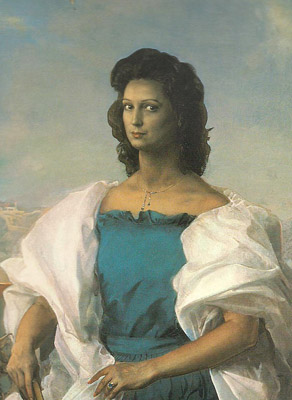

In 1932, journalist Ugo Ojetti featured Annigoni in the Arts section of the Corriere della Sera. Also in 1932, he won the Trentacoste prize.Annigoni was married to Anna Giuseppa Maggini in 1937 until her death of illness in July 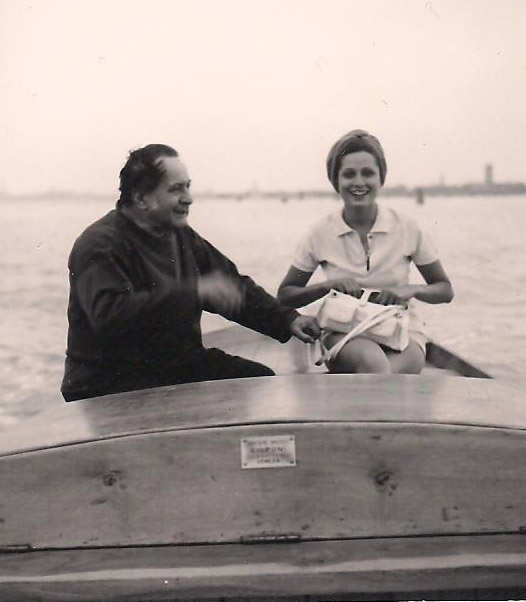 1969. They had two children, Benedetto (1939) and Maria Ricciarda. In 1976 he married Rosella Segreto,
1969. They had two children, Benedetto (1939) and Maria Ricciarda. In 1976 he married Rosella Segreto, 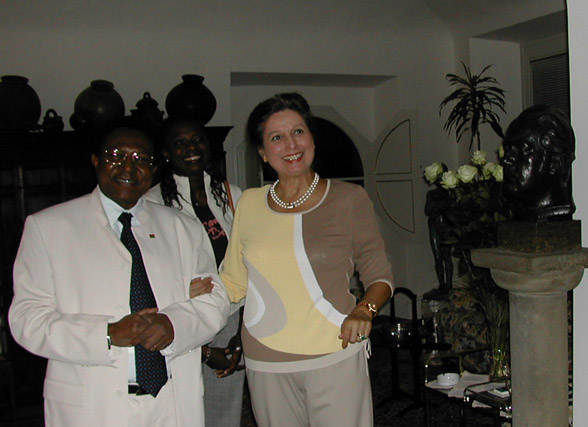 also a favorite model of
also a favorite model of  the artist.In May 1988, Annigoni had emergency surgery due to a perforated ulcer, and he did not recover fully from the ailment
the artist.In May 1988, Annigoni had emergency surgery due to a perforated ulcer, and he did not recover fully from the ailment ![[Annigoni portrait art]](http://www.borsheimarts.com/news/images/news0903_Annigoni_PortraitStudyofEva.jpg) He is buried in the Porte Sante (Holy Doors) cemetery at the Basilica di San Miniato al Monte,
He is buried in the Porte Sante (Holy Doors) cemetery at the Basilica di San Miniato al Monte, overlooking his beloved Florence.Between 1945 to 1950, Annigoni produced a succession of important and very
overlooking his beloved Florence.Between 1945 to 1950, Annigoni produced a succession of important and very  successful works. In 1947, he signed the manifesto of
successful works. In 1947, he signed the manifesto of ![[Annigoni portrait art]](http://www.borsheimarts.com/news/images/news0903_Annigoni_PortraitBarry.jpg) Modern Realist Painters. In this manifesto the group, which consisted of seven painters, came out in open
Modern Realist Painters. In this manifesto the group, which consisted of seven painters, came out in open  opposition to abstract art and the various movements that had sprung up in Italy in these years.
opposition to abstract art and the various movements that had sprung up in Italy in these years. It was an insignificant detail in the painter's life but it would become a key points of reference in literature about him. Among others who signed
It was an insignificant detail in the painter's life but it would become a key points of reference in literature about him. Among others who signed the petition were Gregory Sciltian, and brothers Antonio and Xavier Bueno.
the petition were Gregory Sciltian, and brothers Antonio and Xavier Bueno.![[Annigoni portrait art]](http://www.borsheimarts.com/news/images/news0903_Annigoni_PortraitMariaRicciarda1970.jpg)
 1969. They had two children, Benedetto (1939) and Maria Ricciarda. In 1976 he married Rosella Segreto,
1969. They had two children, Benedetto (1939) and Maria Ricciarda. In 1976 he married Rosella Segreto,  also a favorite model of
also a favorite model of  the artist.In May 1988, Annigoni had emergency surgery due to a perforated ulcer, and he did not recover fully from the ailment
the artist.In May 1988, Annigoni had emergency surgery due to a perforated ulcer, and he did not recover fully from the ailment ![[Annigoni portrait art]](http://www.borsheimarts.com/news/images/news0903_Annigoni_PortraitStudyofEva.jpg) He is buried in the Porte Sante (Holy Doors) cemetery at the Basilica di San Miniato al Monte,
He is buried in the Porte Sante (Holy Doors) cemetery at the Basilica di San Miniato al Monte, overlooking his beloved Florence.Between 1945 to 1950, Annigoni produced a succession of important and very
overlooking his beloved Florence.Between 1945 to 1950, Annigoni produced a succession of important and very  successful works. In 1947, he signed the manifesto of
successful works. In 1947, he signed the manifesto of ![[Annigoni portrait art]](http://www.borsheimarts.com/news/images/news0903_Annigoni_PortraitBarry.jpg) Modern Realist Painters. In this manifesto the group, which consisted of seven painters, came out in open
Modern Realist Painters. In this manifesto the group, which consisted of seven painters, came out in open  opposition to abstract art and the various movements that had sprung up in Italy in these years.
opposition to abstract art and the various movements that had sprung up in Italy in these years. It was an insignificant detail in the painter's life but it would become a key points of reference in literature about him. Among others who signed
It was an insignificant detail in the painter's life but it would become a key points of reference in literature about him. Among others who signed the petition were Gregory Sciltian, and brothers Antonio and Xavier Bueno.
the petition were Gregory Sciltian, and brothers Antonio and Xavier Bueno.![[Annigoni portrait art]](http://www.borsheimarts.com/news/images/news0903_Annigoni_PortraitMariaRicciarda1970.jpg)
In March 1949, the Committee of the Royal Academy in England accepted the works Annigoni offered for its  annual exhibition. It was the artist's first experience with England and the beginning of a success which was to
annual exhibition. It was the artist's first experience with England and the beginning of a success which was to 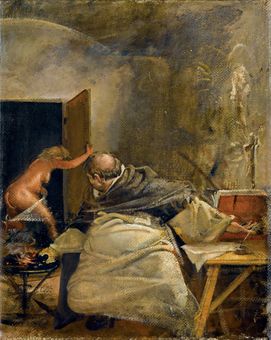 acquire worldwide dimensionsAnnigoni started showing his work internationally in the 1950s. In London, England, they were held at Wildenstein's (1950 and 1954), Agnew's (1952 and 1956), the Federation of British Artists
acquire worldwide dimensionsAnnigoni started showing his work internationally in the 1950s. In London, England, they were held at Wildenstein's (1950 and 1954), Agnew's (1952 and 1956), the Federation of British Artists ![[Annigoni portrait art]](http://www.borsheimarts.com/news/images/news0903_Annigoni_Portrait_Aman.jpg) (1961), the Upper Grosvenor Galleries (1966), and at many Royal Academy exhibitions. A special exhibition in Paris, France at the Galerie
(1961), the Upper Grosvenor Galleries (1966), and at many Royal Academy exhibitions. A special exhibition in Paris, France at the Galerie Beaux Arts was held in 1953. New York Wildenstein's showed Annigoni from 1957-58. By 1969, Annigoni's work was exhibited at the Brooklyn Museum in New York. Numerous Italian cities that showed Annigoni works during
Beaux Arts was held in 1953. New York Wildenstein's showed Annigoni from 1957-58. By 1969, Annigoni's work was exhibited at the Brooklyn Museum in New York. Numerous Italian cities that showed Annigoni works during his life included Turin, Rome, Florence, Verona, Brescia, Montecatini Terme, Pisa, Bergamo, Rovereto and
his life included Turin, Rome, Florence, Verona, Brescia, Montecatini Terme, Pisa, Bergamo, Rovereto and ![[Annigoni portrait art]](http://www.borsheimarts.com/news/images/news0903_Annigoni_PortraitMrs_Woolfson.jpg) MilanHis work bore the influence of Italian Renaissance portraiture, and was in contrast to the modernist and post-modernist artistic
MilanHis work bore the influence of Italian Renaissance portraiture, and was in contrast to the modernist and post-modernist artistic  styles that dominated the middle and late twentieth century.
styles that dominated the middle and late twentieth century.![[Annigoni portrait art]](http://www.borsheimarts.com/news/images/news0903_Annigoni_PortraitLaStrega.jpg)
 annual exhibition. It was the artist's first experience with England and the beginning of a success which was to
annual exhibition. It was the artist's first experience with England and the beginning of a success which was to  acquire worldwide dimensionsAnnigoni started showing his work internationally in the 1950s. In London, England, they were held at Wildenstein's (1950 and 1954), Agnew's (1952 and 1956), the Federation of British Artists
acquire worldwide dimensionsAnnigoni started showing his work internationally in the 1950s. In London, England, they were held at Wildenstein's (1950 and 1954), Agnew's (1952 and 1956), the Federation of British Artists ![[Annigoni portrait art]](http://www.borsheimarts.com/news/images/news0903_Annigoni_Portrait_Aman.jpg) (1961), the Upper Grosvenor Galleries (1966), and at many Royal Academy exhibitions. A special exhibition in Paris, France at the Galerie
(1961), the Upper Grosvenor Galleries (1966), and at many Royal Academy exhibitions. A special exhibition in Paris, France at the Galerie Beaux Arts was held in 1953. New York Wildenstein's showed Annigoni from 1957-58. By 1969, Annigoni's work was exhibited at the Brooklyn Museum in New York. Numerous Italian cities that showed Annigoni works during
Beaux Arts was held in 1953. New York Wildenstein's showed Annigoni from 1957-58. By 1969, Annigoni's work was exhibited at the Brooklyn Museum in New York. Numerous Italian cities that showed Annigoni works during his life included Turin, Rome, Florence, Verona, Brescia, Montecatini Terme, Pisa, Bergamo, Rovereto and
his life included Turin, Rome, Florence, Verona, Brescia, Montecatini Terme, Pisa, Bergamo, Rovereto and ![[Annigoni portrait art]](http://www.borsheimarts.com/news/images/news0903_Annigoni_PortraitMrs_Woolfson.jpg) MilanHis work bore the influence of Italian Renaissance portraiture, and was in contrast to the modernist and post-modernist artistic
MilanHis work bore the influence of Italian Renaissance portraiture, and was in contrast to the modernist and post-modernist artistic  styles that dominated the middle and late twentieth century.
styles that dominated the middle and late twentieth century.![[Annigoni portrait art]](http://www.borsheimarts.com/news/images/news0903_Annigoni_PortraitLaStrega.jpg)
Pietro Annigoni was acclaimed and addressed by those who knew him and by art lovers from the US and Europe as Maestro.
He was famed for his romantic portrayal of the young Queen Elizabeth II in 1956.
Annigoni is also known for his portraits of Pope John XXIII, US Presidents John F. Kennedy and Lyndon B. Johnson, the Shah and Empress of Iran, Princess Margaret and several other members of the British royal family.
Pietro Annigoni was chosen by TIME magazine to paint President of the United States John F. Kennedy for the (January 5) 1962 Person of the Year cover. The result was perhaps his worst portrait as Kennedy would not sit still and Annigoni had no time or inclination to satisfy Time magazine. Other TIME magazine covers that featured portraits by Annigoni were the issues of October 5, 1962 (Pope John XXIII), November 1, 1963 (Ludwig Erhard), and April 12, 1968 (Lyndon B. Johnson).

Other subjects around the world that Annigoni painted include the shoemaker Salvatore Ferragamo, Florentine author Luigi Ugolini,
Florentine author Luigi Ugolini,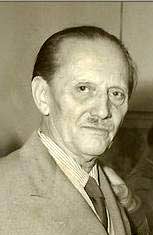 ballet legend Dame Margot Fonteyn,
ballet legend Dame Margot Fonteyn,
 American actress and poet Vanna
American actress and poet Vanna
Bonta as a girl, and the Maharani Gayatri Devi of Jaipur.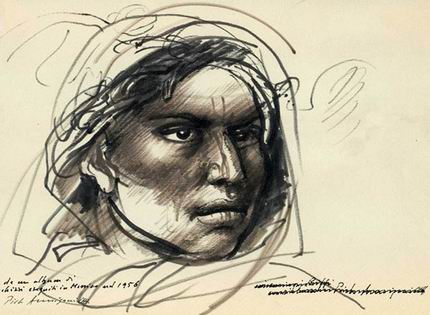
 Florentine author Luigi Ugolini,
Florentine author Luigi Ugolini, ballet legend Dame Margot Fonteyn,
ballet legend Dame Margot Fonteyn,
 American actress and poet Vanna
American actress and poet Vanna Bonta as a girl, and the Maharani Gayatri Devi of Jaipur.

Although he gained acclaim as a painter of royalty, Annigoni chose his subjects from a cross section of humanity, painting what interested him. He was not impressed by pomp and ceremony, and maintained relationships, never losing the common touch from his early days as a struggling artist.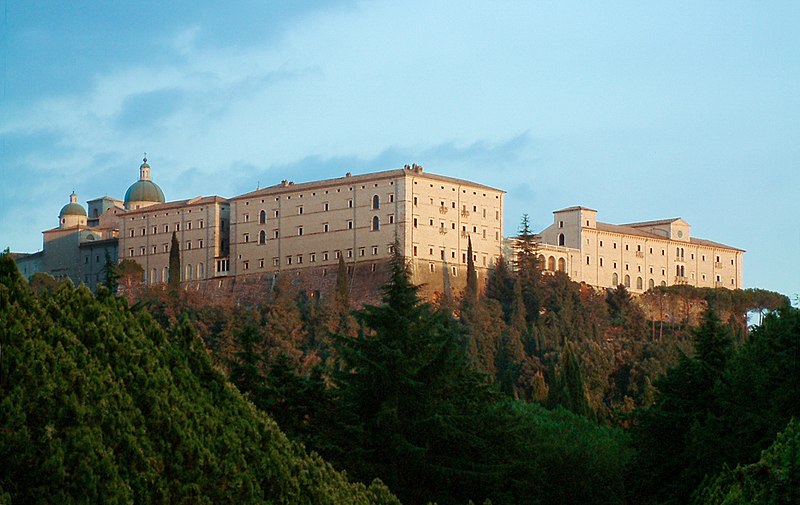

An outspoken artist who did not refrain from iconoclasm toward his perception of passing or superficial social trends, Annigoni wrote essays challenging modern art that disregarded the basic ability to draw. He alienated critics, who claimed his art was too representational, discounting the unique dramatic signature the artist brought to Renaissance tradition.Annigoni gave much time in his life to painting church frescoes in and around his Florence. It was at the Monte Cassino monastery south of Rome, that he worked on his largest fresco work of art, the dome of the monastery in 1980 at the age of 70 and took five years to complete it
No comments:
Post a Comment